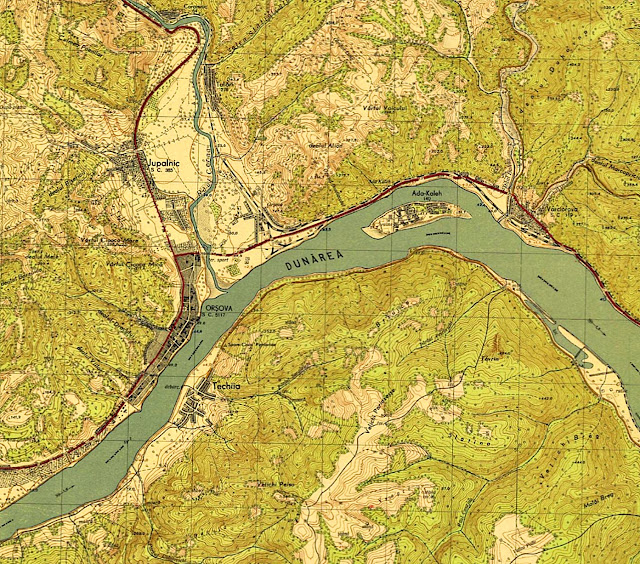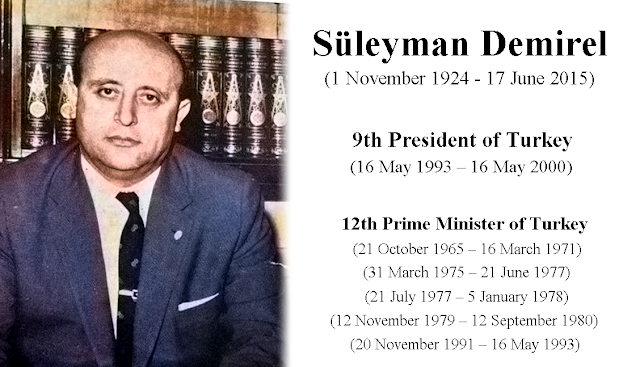Tuesday, April 11, 2023
Ada Kaleh island - the last Ottoman territory in Central Europe
Ada Kaleh was a small island on the Danube, between Romania and Serbia, that was submerged during the construction of the Iron Gates hydroelectric plant in 1970.
Ada-Kaleh Island was located 3 km downstream from the city of Orşova, it had an altitude of 48 meters, being dominated by the Alion hill, 317 meters high located north of the Danube and at south by Golubinska Planina. The length of the island was 1750 meters, and the width 400-500 meters.
The first documentary attestation of the island is a report of the Teutonic Knights of February 22, 1430, about the Banat fortifications, which talks about the island of Saan with 216 people.
Throughout history, it has carried many other names, including Caroline Island, Uj-Orsova Sziget (in Hungarian), Orsovostrvo (in Serbian) and Insula Orșovei (in Romanian). Its most widely used name is Ada Kaleh, literally meaning "Island Fortress" in Turkish.
The island of Ada Kaleh was of particular importance in the conflicts of the Habsburg Empire with the Ottoman Empire because of its strategic position. In 1689 the Austrian army built a fortress here. In the following decades, the island of Ada Kaleh was occupied successively on several occasions by Austria and the Ottoman Empire. Following the Peace Treaty of Belgrade of 1739, the island returned to the Ottoman Empire, with brief temporary interruptions in favor of the Austrians between 1789 and 1791.
After the Treaty of Sistova (1791), which ended the last war between the Ottoman Empire and the Habsburg Monarchy, the island lost its military importance. Ada-Kaleh remained under the Turkish control, while Austrians will take the nearby town of Orsova.
In 1804, during the First Serbian Uprising, Serbian rebels, led by Milenko Stojković, caught and executed the renegade Janissary officers who took power in the Sanjak of Smederevo, that had fled Belgrade and taken refuge on the island, thereby ending Dahije tyranny.
Even though the Ottomans lost the areas surrounding the island after the Russo-Turkish War (1877–1878), the island was totally forgotten during the peace talks at the Congress of Berlin in 1878, which allowed it to remain a de jure Ottoman territory. The areas surrounding the island were controlled by Austria-Hungary to the north and Serbia to the south, but the island was under Ottoman sovereignty.
The Ottoman Government continued to appoint a Mudir (mayor) and a Kadir (judge) regularly. The island's inhabitants (officially citizens of the Ottoman Empire) enjoyed exemption from taxes and customs and were not subject to conscription. The islanders also had the right to vote during the Ottoman general elections of 1908.
A mosque was built on the site of an earlier Franciscan monastery in 1903. The carpet of the mosque, was a gift from the Turkish Sultan Abdülhamid II.
On May 12, 1913, taking advantage of the Balkan Wars, the island was occupied by the forces of Austria-Hungary. This was one of the last unilateral territorial expansions of Austria-Hungary before the outbreak of the First World War; the seizure was never officially recognized by the Ottoman government.
On July 24, 1923, the new Republic of Turkey officially ceded Ada Kaleh to Romania with Articles 25 and 26 of the Treaty of Lausanne.
The population on the island lived primarily on the cultivation of tobacco, fishery and smuggling, and later on tourism.
The island, was practically the only place in Romania where you could get unfiltered Turkish coffee. On the island were shops specializing in textiles and jewelry. They also offered perfumes, Turkish delight, fruit jams, and tobacco products, all from locally grown crops. The island was visited by King Carol II of Romania in 1931.
In its last years of existence, the island's population ranged between 600 and 1,000 inhabitants. After the Second World War, Fearing its citizens would flee to Yugoslavia, Romanian communist authorities restricted access to the island. Visitors had to hand over their passports, and were forbidden to spend the night on Ada Kaleh. Locals could not cross to or from the island after 8 pm.
In 1964 began the construction of a major dam on the Danube River, which will later cover the island under 35 meters of water. In 1965, some islanders joined the Turkish minority in Romania's Dobruja region. They took the Sultan's carpet along with them to the mosque of Constanța.
Some of the structures that were built on the island were relocated to the nearby Şimian Island, including part of the masonry of the fortress' catacombs, the mosque, the bazaar, Mahmut Pasha's house, the graveyard and various other objects. In 1967, Turkish Prime Minister Süleyman Demirel visited Ada Kaleh, inviting its inhabitants to move to Turkey, which most of them did, instead of re-settling on Șimian Island.
By 1968, the island was depopulated, the remaining buildings were demolished, and in 1971, Ada Kaleh disappeared beneath the waters of Danube.






